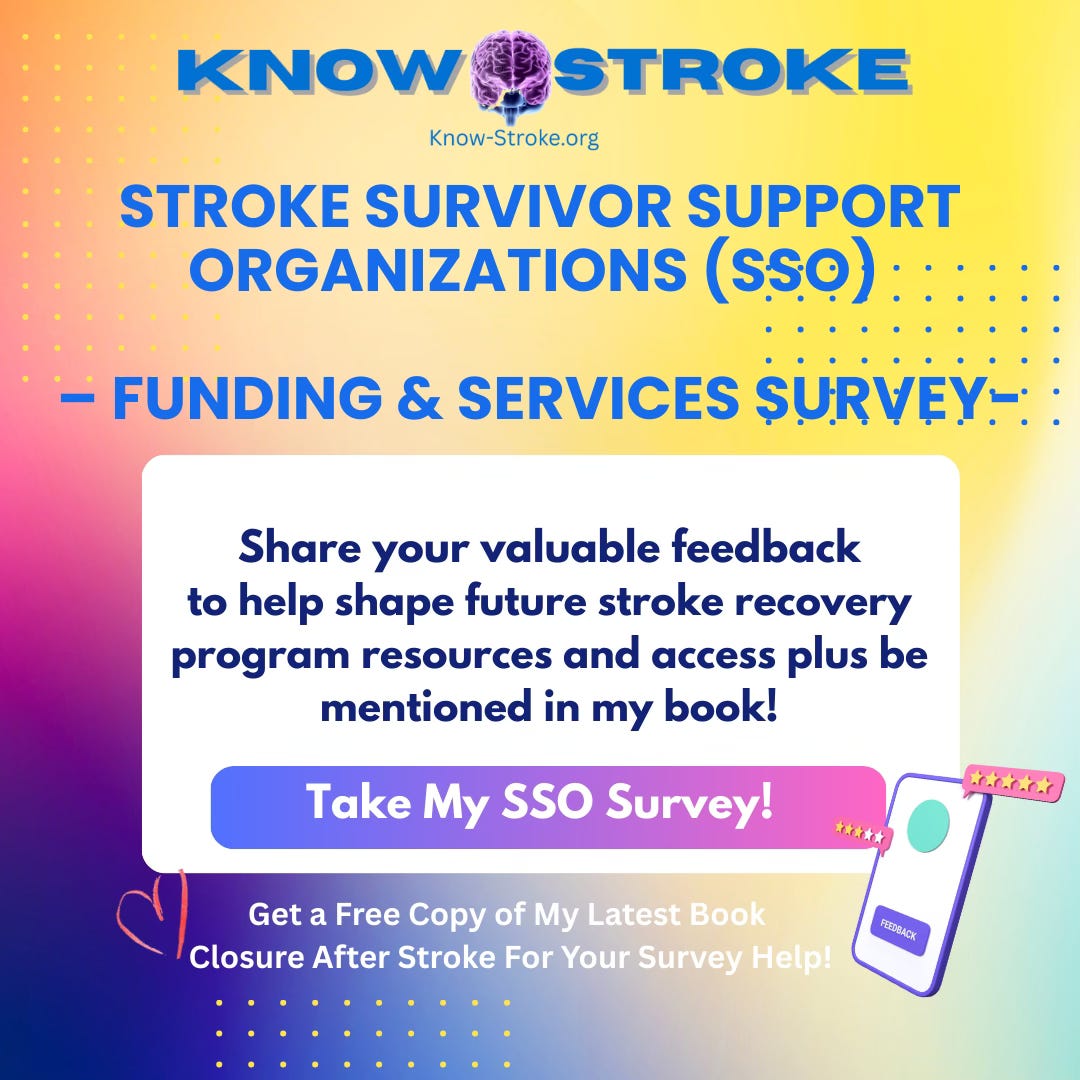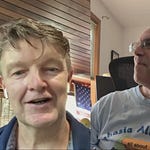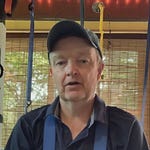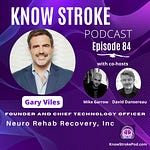For more than 18 years, I’ve lived the ups and downs on the long road of stroke recovery. As a stroke survivor, perhaps you have too.
What many not connected to stroke don’t realize is that after the hospital and rehab stay ends, survivors are often left with little to no guidance on how to rebuild their lives.
That’s where Stroke Support Organizations (SSOs) come in — small, community-based nonprofits and volunteer groups that offer peer groups, caregiver support, education, and a lifeline of hope in a long climb back up after stroke.
But here’s the problem: SSOs are struggling to survive.
There are an estimated 500–700 SSOs across the U.S., most of them run by survivors and caregivers themselves. They operate on shoestring budgets, relying on volunteers, small donations, or the occasional grant. Too many are one funding crisis away from closing.
Meanwhile, the need for these organizations is only growing. Stroke is rising among younger adults, which means more people face decades of recovery, career disruption, and family strain. These survivors need long-term support networks, yet the very groups designed to help them are financially fragile.
The Facts:
Below, here’s what I’ve learned from my book research and volunteer involvement with many SSOs so far. I hope you can help me fill in some of the data gaps and get involved in this research.
* The American Heart Association/American Stroke Association (AHA/ASA) has invested heavily in awareness campaigns, prevention, and hospital-based programs. But when it comes to directly funding grassroots survivor organizations, the picture is far less transparent.
Millions of dollars are spent nationally, but only a fraction reaches local SSOs — leaving survivors to fall through the cracks.
“This is not just a funding gap; it’s a care gap. Without SSOs, too many survivors are left isolated, depressed, and struggling alone.”-David Dansereau
Let’s Put Our Brains Together-Let’s Fix This!
But…before we can fix it we need to measure so we can figure out how to best manage the problem.
That’s why I’m launching a national survey of SSOs to measure and better understand their services, funding challenges, and barriers to support. The results will provide hard data on what survivors and caregivers already know: these organizations are essential, but they are underfunded and undervalued.
Stroke Survivor Support Organizations (SSOs) – Funding & Services Survey
The survey results will be released publicly and featured in my upcoming book, Closure After Stroke, to spotlight these realities and push for greater transparency in how national funding organizations support survivor-led programs.
If you help me with my research by taking the survey, I’ll offer you a free advanced reader copy of my book when it is ready!
Here’s my call to action:
To SSOs: Share your story in this survey. Your voices matter, and together we can shine a light on the gaps and build a collective ‘Position Statement for Stroke Support Organizations’ that outlines the need and a plan to make change happen.
To funders and policymakers: Survivors cannot wait. It’s time to treat SSOs as partners, not afterthoughts, in the stroke care pathway.
To AHA/ASA: Be transparent. Survivors and their support networks deserve to know how funding decisions are made and why so little flows to the grassroots level.
Stroke doesn’t end at discharge. Support shouldn’t either. Survivors deserve better — and SSOs deserve the resources to continue the lifesaving work they do every day.
These are tough times and these groups can’t afford to wait. Perhaps this survey can unite a few more SSOs to share best practices, resources and take action to build a coalition to step up for more sustainable funding. SSOs provide an enormous benefit to stroke survivors and their care partners and we can’t afford to lose more of them.
Here’s the value provided by SSOs once patients are discharged from formal medical care or lose services
SSOs represent patients and understand their lived experiences in a world that is heavily focused on the opinions of health professionals. Within this unique role in the stroke care continuum, they can:
Provide social support groups, which have been shown to have a positive impact on mental health and rehabilitation.
Help people who make decisions about stroke care understand what is important to the people affected by stroke. This is important when symptoms can be invisible or can restrict people’s ability to get their point across in cases of difficulty with speech and language, often an impairment after a stroke.
Provide support for people affected by stroke that nobody else can or will provide. Sos step up and fill some gaps for patients and caregivers who feel they ‘step off a cliff” at hospital discharge.
Advocate and act on behalf of people affected by stroke.
Help identify survivor needs and campaign for change and influence government policies and national stroke organizations awareness of their needs.
Help stroke professionals communicate better with people affected by stroke by learning from this community once they return to the challenges of the real world.
Connect survivors and care partners with health professionals, community resources and experts who can share the latest science and research about advances in stroke care.
Who’s looking at this sustainability crisis for SSOs?
The World Stroke Organization (WSO) conducted its first-ever global mapping of Stroke Support Organizations (SSOs) in 2020. While not a specific financial needs assessment survey, the mapping did touch upon the challenges of sustainability.
Here's what the 2020 mapping achieved and what it revealed about SSOs' needs:
A "first-ever" initiative: The 2020 mapping was the first time the WSO had systematically collected data on SSOs globally.
Survey scope: The survey gathered information from 92 SSOs across 58 countries, focusing on their locations, organizational activities, and service delivery. It also provided a snapshot of their awareness and advocacy efforts.
Reported challenges: The summary report from this mapping, published in 2021, highlighted that SSOs face significant challenges, including a "lack of sustainability of financial and human resources". The findings noted that inadequate national stroke policies and limited data also hinder their potential.
Financial findings from related UK research: Though not a WSO survey, a related 2012 Stroke Association (UK) toolkit that informed the WSO's work found that 89% of SSOs identified financial problems, such as finding funding, as a main barrier to growth. Fifty percent felt finances were the biggest barrier to starting or maintaining an SSO.
This mapping completed by the WSO was intended to inform the WSO's future capacity-building efforts for SSOs, with plans for the report to be updated at regular intervals.
So what are we doing in the United States to understand the needs of SSOs?
* There has been no evidence found in my research to date of a specific, large-scale needs assessment survey conducted by the American Heart Association (AHA) or American Stroke Association (ASA) that focuses specifically on the financial needs and sustainability of volunteer-led, non-profit stroke support organizations in the United States.
While the AHA/ASA do partner with and provide resources for local support groups through grants, published search results and reports indicate that most of their needs assessment activities focus on different areas:
Medical and patient-centric needs: Their needs assessments most often center on the clinical, emotional, and social needs of stroke survivors and their caregivers.
National programmatic needs: They evaluate broader public health trends, hospital-based care quality, and the effectiveness of national programs and release research and position statements related to healthcare policy.
While I continue to dive deeper into this topic for my upcoming book, I am collecting more research from stroke support organizations that I’ve worked with and for in the past as well as volunteered for as an exert presenter. Much more to come on those experiences and lessons learned in my book. In the meantime…
“My father always said, if you see something broken, fix it. That’s what I am trying to do because stroke after care is broken at a critical time when stroke in young adults is on the rise.” -David
References:
UC Health-Strokes in young people: They’re occurring more often. Why?
CDC- Prevalence of Stroke : Behavioral Risk Factor Surveillance System, United States, 2011–2022
* Preliminary results from my research using LLM research tools (ChatGPT and Gemini),website searches along with interviewing and working with 7 SSOs personally and collecting their feedback as well as from data from 4 more SSOs via the survey as well as awaiting more responses.
I hope you can help! Share your thoughts below and please share this survey with any SSO leaders you know. Thank you!













